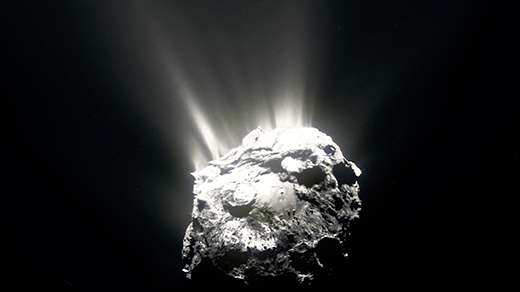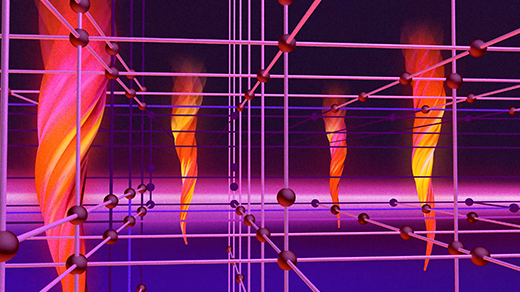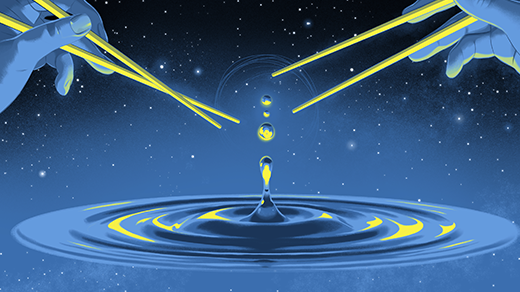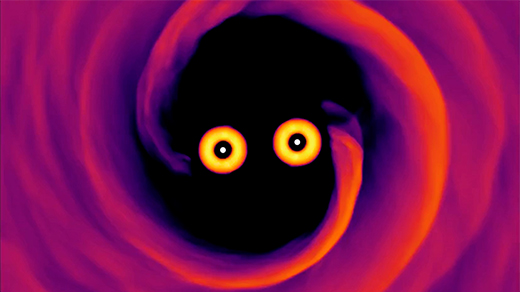What's up in
Physics
Latest Articles
The Cosmos Teems with Complex Organic Molecules
Wherever astronomers look, they see life’s raw materials.
Physicists Spot Quantum Tornadoes Twirling in a ‘Supersolid’
New observations of microscopic vortices confirm the existence of a paradoxical phase of matter that may also arise inside neutron stars.
It Might Be Possible to Detect Gravitons After All
A new experimental proposal suggests detecting a particle of gravity is far easier than anyone imagined. Now physicists are debating what it would really prove.
How Do Merging Supermassive Black Holes Pass the Final Parsec?
The giant holes in galaxies’ centers shouldn’t be able to merge, yet merge they do. Scientists suggest that an unusual form of dark matter may be the solution.
‘Quantum Memory’ Proves Exponentially Powerful
Researchers are exploring new ways that quantum computers will be able to reveal the secrets of complex quantum systems.
The ‘Beautiful Confusion’ of the First Billion Years Comes Into View
Astronomers are reveling in the James Webb Space Telescope’s discoveries about the formative epoch of cosmic history.
The Computer Scientist Who Builds Big Pictures From Small Details
To better understand machine learning algorithms, Lenka Zdeborová treats them like physical materials.
Can Space-Time Be Saved?
Curious connections between physics and math suggest to Latham Boyle that space-time may survive the jump to the next theory of reality.
Physicists Reveal a Quantum Geometry That Exists Outside of Space and Time
A decade after the discovery of the “amplituhedron,” physicists have excavated more of the timeless geometry underlying the standard picture of how particles move.








